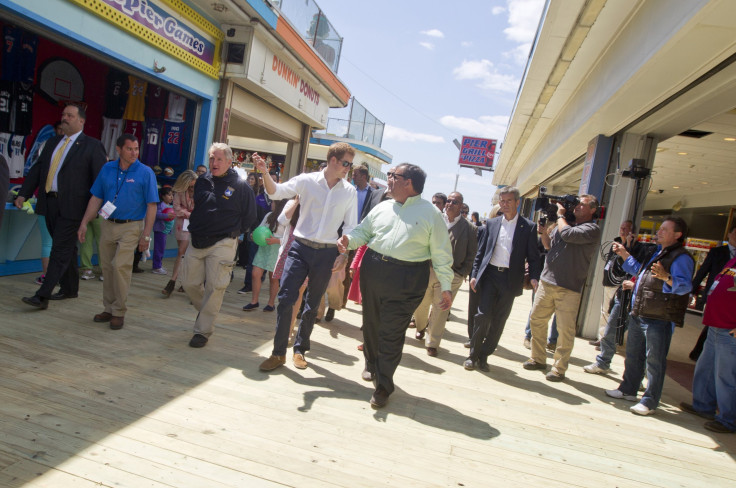Jersey Shore Recovery Efforts Assessed At End Of Summer Season

“There is nothing more Jersey than the Jersey Shore. Nothing more Jersey than our boardwalks,” New Jersey Gov. Chris Christie boasted from Point Pleasant Beach last week. “When I came down here in the immediate aftermath of [Superstorm Sandy] and saw the destruction here in Point Pleasant Beach, it broke my heart. You know, I wondered whether we were going to be able to recover, and recover quickly enough to be ready by Memorial Day.
“But you know, already we’ve removed 96,000 cubic yards of debris from the state’s waterways so people could swim and boat safely around the state. We’ve cleared debris from over 275 marinas, over 200 sunken boats, and the great news is -- and I could tell this when I was flying up here today, we flew up the coastline -- I’ve never seen the water in New Jersey look cleaner or better than it looks this summer.”
Christie’s remarks came amid a weeklong tour up and down the Jersey Shore to tout its Herculean recovery in the 10 months since Superstorm Sandy came a-walloping through, causing more than $38 billion in damages, and dealing a major blow to the state’s $40 billion tourism industry.
The Christie administration has spent much of the last week praising the New Jersey Economic Development Authority’s three-pronged Stronger NJ Business program to support the rapid recovery effort, particularly in popular tourist destinations. It includes the $260 million Stronger NJ Business Grant Program, the $100 million Stronger NJ Business Loan Program and the forthcoming Stronger NJ Neighborhood and Community Revitalization Program.
Although many of New Jersey’s famed boardwalks were damaged or destroyed by Sandy, Christie said every single one of them was once again “open for businesses.” It’s a phrase he has repeated time and again since he “officially” opened the Jersey Shore for the summer season on NBC’s "Today" show at Seaside Heights -- a town that is perhaps the Shore’s most famous for two very different reasons: MTV reality star Snooki and the partially submerged Jet Star roller coaster, the icon of Sandy’s destruction.
Christie has spent the past several months acting as the Shore’s biggest cheerleader, touring with everyone from President Barack Obama to Prince Harry, and tossing in enough Snooki and The Situation jokes to keep the headlines rolling. He also starred in the Jersey Shore’s $25 million ad campaign under the slogan “Stronger than the Storm,” while running for re-election this year.
The governor's tireless optimism, however, belies a less rosy reality for many businesses along the 127-mile strip of coastline who are struggling to lure visitors back.
This Labor Day weekend marked the end of the summer tourism season in the United States, and many, like Christie, have used the occasion to reflect on the Garden State’s recovery efforts. Tourism is New Jersey’s third-largest industry and, according to the Christie administration, revenues were down by about 40 percent, while home rentals were off by about 30 percent.
Hotel-occupancy rates also dipped from 64 percent to 57 percent in June in the four coastal counties, according to an analysis by STR, a firm that tracks hotels, though they improved to a more typical 71 percent in July.
An Asbury Park Press analysis found that beach badge sales, a good barometer of the tourism industry’s health, lagged last year's by more than $4 million. The paper found that Toms River and Brick Township sustained the biggest losses at 84 percent and 58 percent respectively.
Of course, a wet start to summer (June was the wettest on record for the state) and at least 70 dead dolphins washing ashore didn’t help ease the post-Sandy declines. But many New Jersey officials, Christie included, believe the Shore is doing far better than predicted.
When all was said and done, Sandy damaged or destroyed some 346,000 homes and displaced 116,000 residents in the state. It affected an estimated 185,000 businesses, resulting in about $11.7 billion in economic losses, according to a report from Rutgers’ Edward J. Bloustein School of Planning and Public Policy. Looking at these figures, most analysts believed summer 2013 would be a complete washout. We now know that it wasn’t.
© Copyright IBTimes 2024. All rights reserved.





















